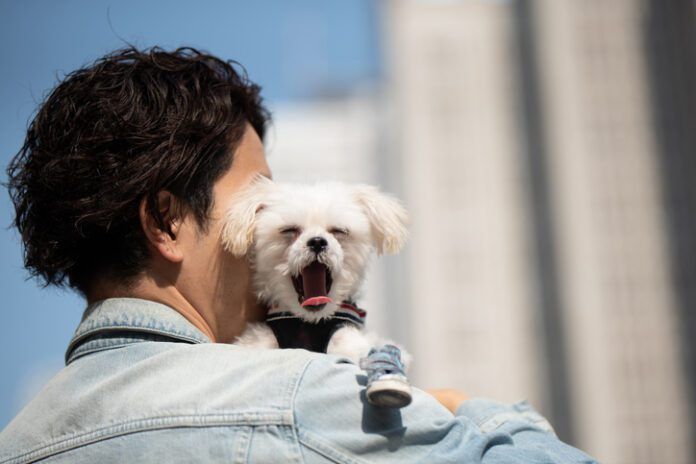There are many canine behaviors that parallel human behaviors. Yawning is one of these. Why does your dog yawn? There are lots of theories about why dogs (and humans) yawn, but there has been surprisingly little research into this behavior. Here are some theories about why we all yawn:
- Boredom or drowsiness. There are some studies that indicate an increase in arousal levels and heart rates following a yawn, probably due to increased blood flow. This helps wake the yawner up!
- A dog’s yawns are usually accompanied by other classic signs of canine stress: flattened ears, lowered body posture, avoidance of eye contact, lip-licking, and muscle tension. If your dog yawns when you pet her, she might be telling you that she finds petting at least a little stressful.
- Empathy/Contagion. Cross-species contagion has been documented: Seeing your dog yawn can elicit a yawn from you, and vice versa. There is some science to support this theory that these are empathy yawns, although the science doesn’t explain why just hearing or reading the word “yawn” can elicit yawning. Yes, I’m betting you are yawning while reading this!
- Communication: A dog yawning to another dog is not a sign of “submission” (as in, “Please don’t hurt me!”). Rather, the yawning dog is simply peace-making by deflecting tension with a “I don’t want any trouble” signal.
Look at the whole dog
Like so many other canine body language signals, yawning has multiple meanings. If you want to understand what your dog’s particular yawn means, you need to look at the whole dog, then draw your conclusion about what your dog’s yawn is telling you.






